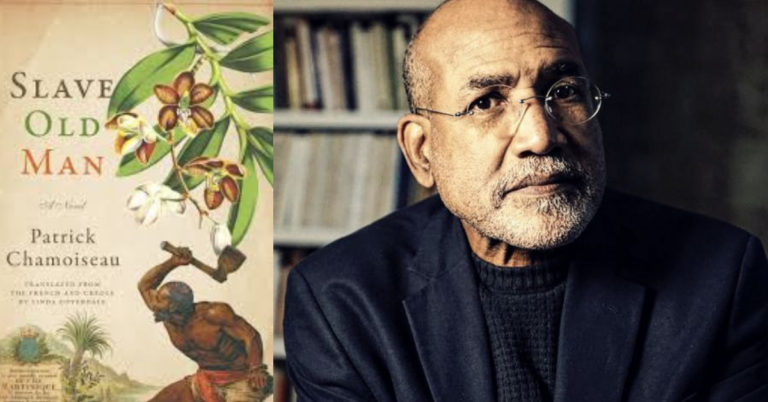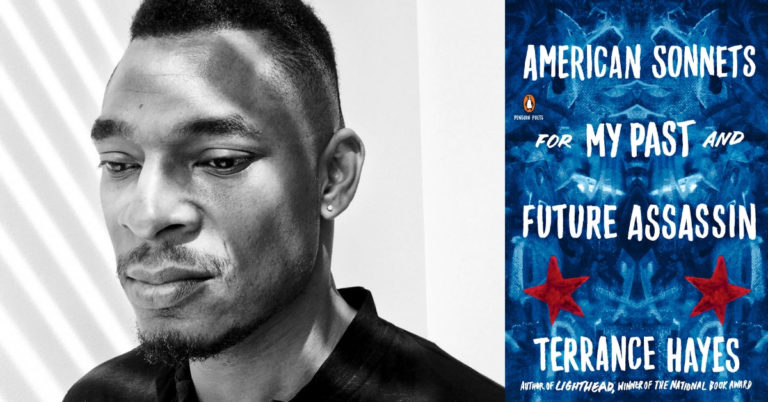
Near the beginning of each term, I tell my writing students that they’re all going to fail. It’s a rhetorically charged claim; a few students giggle or snicker, clearly uncomfortable, and then everyone grows pretty silent. And then I tell them that I don’t really mean fail in the traditional, F-on-the-transcript-and-uncomfortable-calls-home sense (sometimes there’s more uneasy laughter here); I mean that writing is always the practice of failure. Most things that are valuable, worthwhile, or offer anything like real meaning are developed through long patterns of failure. I construct an x-and-y coordinate plane on the whiteboard and draw in a sweeping exponential curve that levels out right at the horizontal axis: the limit at Y = 0. And I say, look: this line will get closer and closer and closer to the axis over time, but it’s never going to get there. That, I claim, is what it’s like to learn to write.
My students who decide to stick around academia in some capacity post-graduation eventually realize, as I am, that living and working and studying in the academy is also a practice of failure. Rejection can be as frightening for a Ph.D applicant or article-writing professor as for a lovestruck student. It’s the middle of December as I write—application season, the season of submission. Hopeful undergrads- and grads-to-be are filling online forms’ blank fields, pressing SUBMIT, and bedding down into anxious hibernation for a few months.
Having filed my sixth and final application a few days ago, I write from the thicket of those feelings. And I’ve noticed that the well-meaning encouragements offered by friends, family, and beleaguered letter-of-recommendation writers echo the advice I give to my students, figuring failure as part of some long process: the necessary, though admittedly painful, antithesis of the personal dialectic. Hooray, goes the thinking, for personal growth, the fuel for which is failure, dry and ready to burn.
But I wonder if treating failure as the kindling for the future fire of success is to miss the point, to accede too readily to the gospel of growth and the bootstrappy forward-march-towards-progress narrative that fits too easily into the cultural paradigms that invent fictions like the welfare queen and tell my students to either major in STEM or starve. What happens when we think about failure as something else? Something meaningful and important, a thing-in-itself?
David Foster Wallace writes well about failure possibly because he is obsessed with tennis, and tennis is the sport most rooted in failure, besides maybe baseball. In Chad Harbach’s The Art of Fielding, a character reflects on the fact that baseball is an especially cruel sport not only for recording “errors” as an official statistic, but also for placing that statistic on the scoreboard, right next to hits and runs. The threshold of success in baseball is famously low: a .350 batting average is stellar, but 35% on a test is an unusually poor failing grade. Even the apex of baseball-related achievement, a perfect game, is ironically all about failure, really. In baseball’s perfect game, the losing team must fail twenty-seven times—or, flipping the perspective, the pitcher must successfully create failure twenty-seven times. Contrast this to bowling, the other sport with a “perfect game,” in which perfection is unmitigated success: twelve straight strikes. But tennis, like baseball, records errors—and, in fact, calls its statistic “unforced errors,” which goes so far as to assign singular, inescapable blame. A shortstop might reasonably dismiss an error because of a bad hop or uneven seam; a tennis player has no such recourse.
Who is offered the opportunity to fail, and who possesses the social and economic foundations that make certain types of failure bearable?Maybe it’s unsurprising, then, that Wallace’s worlds are saturated with failure. Although sometimes instigated by a falling-apart of plans or a character’s inability to act in the world as they would prefer to, failure in Wallace’s work is really a vast network of feeling, identity, reflection, and action. In other words, it seems that Wallace is generally uninterested (or at least less interested) in offering a single definition of failure—or the sort of banal, flip-the-script encouragement that makes failure the alchemical beginning of success—than in exploring what failure does within and among living people. It’s also worth noting that—as several smart commentators, including Clare Hayes-Brady in The Unspeakable Failures of David Foster Wallace, have pointed out—Wallace’s writing exposes (a few of) its own failures, some of which are endemic to language and communication, the state of being a person.
In Infinite Jest, failure is rendered on both personal and political scales: the personal (failure) is the political (failure). The tragedy of, for example, Jim Incandenza, his inability to form intimate and meaningful masculine attachments with either his father or his son (that is, “up” or “down” the generational tree), is reflected in the national failure of the U.S. to form responsible political and ethical attachments with its neighbors (again, “up” to Canada and “down” to Mexico). (Not to mention the national failure to acknowledge the always-present intimacy between the nation and the thing that encompasses it, makes it possible: the natural world; the too-relatable ecological mood of Infinite Jest is catastrophe made banal.) In both cases failure spurs a scrambling action, a reaching-out made desperate by failure and caught in one of Wallace’s trademark positive-feedback loops. Jim concocts increasingly absurd (and eventually menacingly engrossing) strategies to reach his son Hal, while the U.S. attempts almost literally to cover up its failures by enforcing intimacy through the creation of O.N.A.N.: the Organization of North American Nations. Of course, as its name suggests, O.N.A.N is not really intimacy at all, and its political attitude is not unlike the solipsism that emerges, however accidentally, from James’s desperate attempt to communicate with Hal: the deadly engrossing videotape known as the Entertainment. The solution proposed to conflicts both interpersonal and intracontinental is the elimination of the other; the Entertainment hollows out the viewer, destroys will and agency, while through the creation of O.N.A.N. the U.S. has de facto annexed (in the text, “vichified”) its neighbors.
In both cases failure provokes an affective and emotional response: a desperation or mania for connection that ironically tumbles into solipsism. What’s more, the failure does not lead anywhere; the failure is never transmuted into success. In the cases of Jim and the U.S., tragedy lies not really with the “original” failure. Instead, the pathos and irony emerge from the shape and form failure assumes. Infinite Jest (and Wallace’s work generally) is replete with positive-feedback loops, and failure, regardless of scale, tends to follow this basically addictive pattern that Wallace explains in similar language early in Infinite Jest and in his essay on fiction and advertising and American culture “E Unibus Pluram”: the addictive thing causes problems that the addictive thing promises to solve, or at least make less painful. Likewise anxiety, self-consciousness, and not-obviously-addictive-but-still-internally-recursive phenomena like IRS examiner David Cusk’s excessive sweating—itself caused by his anxiety about the excessive sweating—in The Pale King. In other words, failure is a series of actions as well as a framework through which those actions are read, interpreted, and deemed to be failures. In this way failure becomes something like an emotional geometry. It is a field of feeling, a collection of repeated actions, a method of self-determination, and (fittingly for Jim Incandenza, the filmmaker) a lens. In a sense, failure does not cause the inwardly bent Wallacean spiral—rather, failure is that spiral, or maybe it’s the fact of simultaneously constructing and walking down that spiral.
And this is not, or not only, high-concept abstraction or meta-structural play. There is something emotionally urgent about this form of failure. After all, I suspect most of us have, after some minor error or small mistake, found ourselves caught in a way of living and thinking bounded and shaded by that mistake, and our subsequent actions have done far greater harm, both to others and to ourselves.
But this geometry of failure doesn’t necessarily do harm. The mise-en-abyme spiral isn’t so dissimilar to the quiet, habitual practice of sacrifice and worship most famously extolled by Wallace in “This is Water” and embodied in Infinite Jest by recovering addict and halfway-house counselor Don Gately. In fact, the habitual confrontation of failure becomes the foundation for Gately’s religious praxis. Much has been made, and rightly so, of Don Gately’s unusual (what I would call postsecular) religiosity, his dedication to prayer and ambivalent relationship to a Higher Power. But Gately’s prayer is also an evocation of ongoing failure, and it positions failure as a sort of generative absence. Although he kneels and prays every night, Gately considers that prayer a sort of failure because while praying he feels capital-N, Hemingway-esque Nothing. As the text describes, Gately’s recovery really begins after he begins to “Ask for Help from something he still didn’t believe in,” despite the fact that Gately’s religious ambivalence still occasionally spills over into sneering antagonism: “how can you pray to a ‘God’ you believe only morons believe in, still?” Gately’s prayer is neither supplication nor conversation; Gately does not imagine or picture a divine presence with whom he, to borrow the language of contemporary evangelicalism, can have a personal relationship.
But while his prayer does not ask for the intercession of external, divine power in his ongoing sobriety, Gately nevertheless makes meaning through the failure of his prayer. Not only a carefully sustained and physically embodied practice, Gately’s prayer is specifically a practice of confronting Nothing, of doing prayer outside of some intercessory or exchange-based model. The text points toward this apparent paradox, noting that Gately feels “like a true hypocrite just going through the knee-motions that he went through faithfully every A.M. and P.M., without fail”; what at first might seem like contradictory terms, “hypocrite” and “faithfully” and “without fail,” are positioned as compatible, simultaneous descriptors—maybe even synonyms. It’s not that Gately’s failure becomes success; Gately experiences prayer as an emotional network characterized by feelings of failure—insignificance, pointlessness, being thwarted, confusion, disorientation—that are themselves generative, life-giving. In fact, the freedom (from addiction, from solipsism, from gray ennui) that Gately’s prayer offers is figured as a paradoxical limitation: “now they’ve got you, and you’re free.” In a way that recalls the vacated viewers of the Entertainment, Gately, though his prayer and his participation in AA, finds his freedom in becoming “a shock-trained organism without any kind of independent human will.” Infinite Jest, true to its Shakespearian namesake, sums up this paradox in an ironic phrase borrowed from Hamlet: “se offendendo,” the freedom of self-abnegation. Or, put another way, the freedom that exists in the repeated confrontation with profound failure.
As a reader, I find it less useful to think about Gately’s failed prayer as a movement somehow “towards” the success of abstention and sobriety. I find more helpful the notion that failure itself makes the possibilities of sober life possible. Of course, there are further questions we ought to ask: who, for example, gets to fail? It’s a political question. I have suggested that not all failure is alike, and the especially harmful sort of failure tends not to be distributed equally. So we should continue to ask: who is offered the opportunity to fail, and who possesses the social and economic foundations that make certain types of failure bearable? Put briefly, Wallace’s socially and economically marginal characters rarely do; the ramifications of their failures tend to be brutal. They are, I would argue, sites of broader political and social failures; we have failed them—as has, in some cases, Wallace’s writing and narrative emphasis.
*
It’s also important to note that Wallace’s rethinking of failure connects him with other writers who are reworking and stretching its definition. Failure, its possibilities and textures, seems relevant and urgent; failure is in the air. Philosopher Elaine Scarry, in her vivid and very popular book On Beauty and Being Just, argues that failure is the foundation of learning and right action towards others. She ties failure together with beauty, which we often place outside failure’s purview; we like to think about beauty as the successful application of an artist’s skill. But Scarry points out how often we fail to acknowledge or appreciate beauty, and the moment we recognize that failure is also the moment we reapply close attention to its particularities.
Together, beauty and failure allow us to suddenly feel, in other words, the usually abstract truth that we can be wrong, that our understanding of the world is flawed, limited, and tends towards self-aggrandizement. Scarry describes the moment she first found palm trees, which were once repulsive to her, beautiful, and I imagine many of us have similar stories. Failure in this sense means being aware to the world, to the fact that we are always adjacent to other objects and people who exist and are beautiful. It asks us to reconsider our often-deluded evaluations; to encounter the beautiful is, for Scarry, to come “face-to-face with one’s own errors.” Beauty and failure are inextricable. And from this position of failure, we can begin to interrogate our prejudices, rethink the people and ideas we’ve dismissed. Like Gately’s religious practice, the joy—and, as Scarry goes on to argue, the ethical responsibility—bestowed on us by beauty is shot through with failure, and wonderfully so.
We say a work of art has “moved” us, but failure also moves us.I think the idea here is not really that failure or success need redefinition. Instead, there are aspects of, ways of thinking about, failure that come less readily to mind but which are nevertheless valid and important. We might think about failure the way Maggie Nelson, in The Art of Cruelty, thinks about cruelty: as varied and polysemic. Nelson, who describes the book as a “shaking” of the term, shatters and expands any singular notion of cruelty. Wallace and Scarry are interested in failure as something other than the rest stop on the highway of success, and Nelson is likewise bored by attempts to redeem cruelty or reduce it to the impetus for political action. Rather, she’s after “true moral complexity,” which requires “wading into the swamp, getting intimate with discomfort, and developing an appetite for nuance.”
Failure lends itself to spatial and physical metaphors—wading into the swamp, spinning down the spiral, coming face-to-face—so well, I think, because failure so often feels like a place we inhabit. We say a work of art has “moved” us, but failure also moves us. It pushes and buffets the body, and types of failure have their own shapes and curves. In her most recent book The Argonauts, Nelson describes the “pleasure in recognizing that one may have to . . . relearn the same emotional truths, write the same book over and over again—not because one is stupid or obstinate or incapable of change, but because such revisitations constitute a life.” This is failure as recurrence, failure as long, cyclical abiding. Failure is not the beginning of progress; there is no progress, in the sense of forward movement, leaving the past behind, at all. But there is, as Nelson says, life.
Regardless of what failure might be for any of us at any particular moment—life, or a swell of sadness, or another look at a palm tree, or the long struggle of prayer—we can begin to understand that failure is particular and immense. It is certainly more complex than a big, red F or an email the first line of which begins, “We regret to inform you . . . ” Failure, we might say, signifies quite a lot.



 Lois Weber on set of The Dumb Girl of Portici, 1915
Lois Weber on set of The Dumb Girl of Portici, 1915 Still from Shoes, 1916
Still from Shoes, 1916 Lois Weber at her typewriter, 1926
Lois Weber at her typewriter, 1926


























